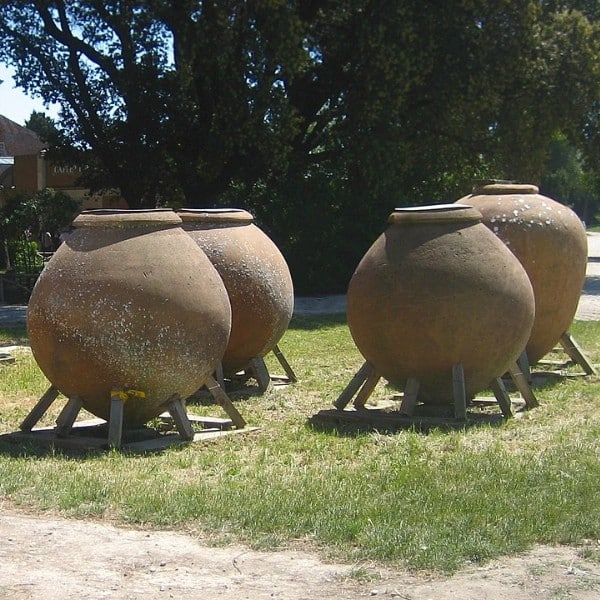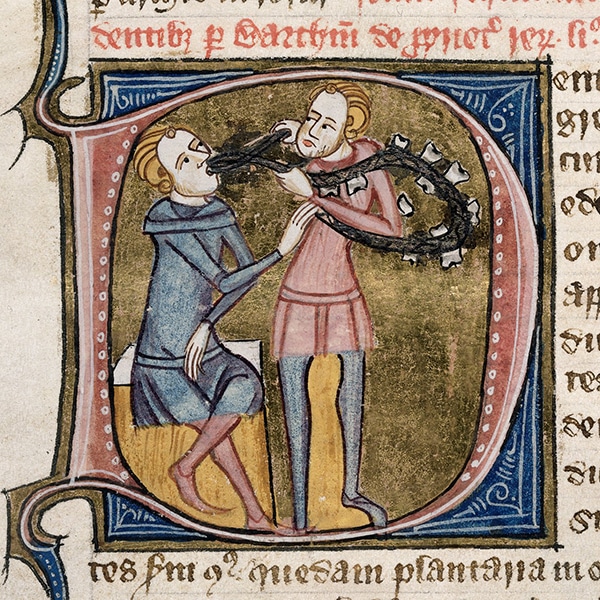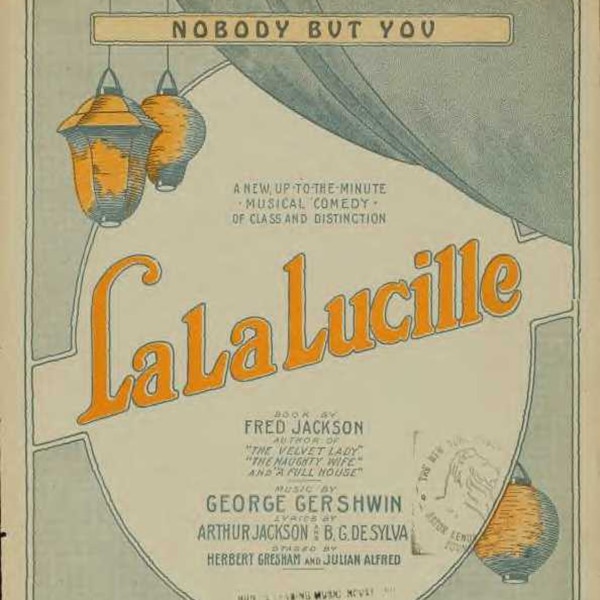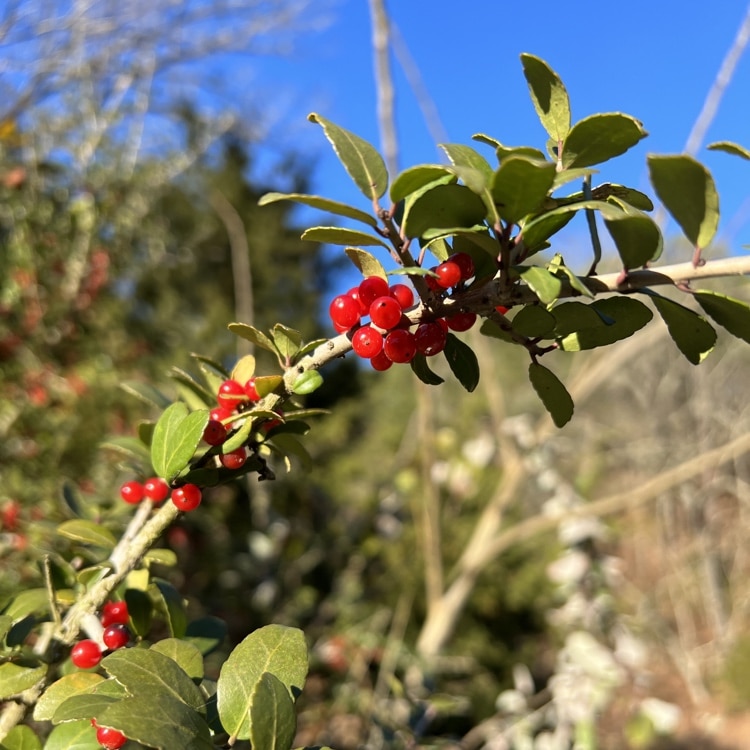
Photo: Bryon White, Yaupon Brothers
In 2020, the United States imported $473 million worth of tea, mostly from Asia. But did you know, that America has its own indigenous tea? If you didn’t, you are not alone. In fact, many people in the southeast United States grow this plant in their backyard without ever knowing that they are, in fact, growing tea. Yaupon tea is an herbal tea made from the leaves of the Yaupon holly. Related to yerba mate, Native Americans traditionally brewed this tea for its medicinal purposes. Filled with antioxidants and as one of the few caffeinated plants native to the United States, one has to wonder why Yaupon tea hasn’t garnered more attention. To understand why we need to travel back in time.
Tea has deep roots in the United States, and those roots begin long before the Boston Tea Party. Yaupon was known as cassina by the Timucua tribe and it was later dubbed “black drink” by the Spanish explorers because of its color. This tea was used by many native tribes for medicinal purposes, as well as during elaborate ceremonies. People would drink it on a daily basis, but also use it during purification rituals. Prior to making important decisions, a special mixture of the tea would be ingested in order to ensure that the mind was clear.
By the time the English arrived in the United States, yaupon tea was deeply ingrained in American culture. In fact, archeologists have found residue of the beloved tea in a cup that dates back to 1050 CE. And this tea wasn’t only sought after by Indigenous people—it was a hot commodity. Early colonists actually exported the tea to Europe, but this quickly changed.
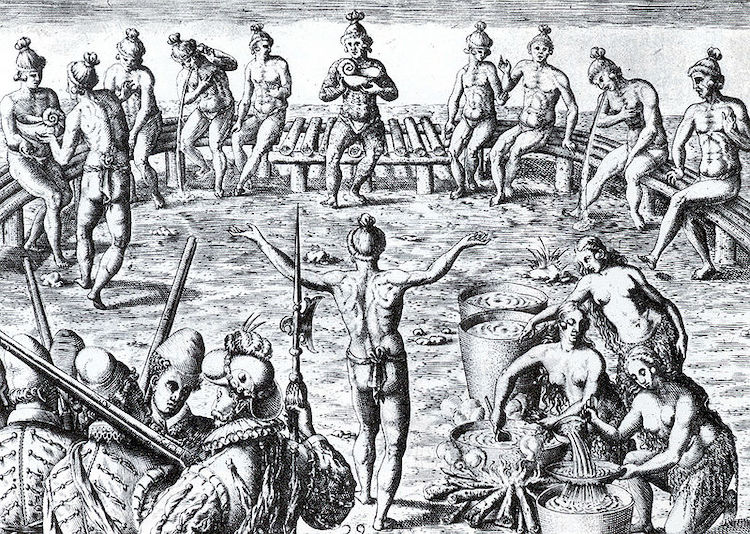
16th-century engraving by Jacques le Moyne of the Black drink ceremony among the Timucua of Florida. (Photo: Jacques le Moyne via Wikimedia Commons, Public domain)
Unlike its cousin yerba mate, which is still widely used in South America, yaupon tea did not weather the storm of new arrivals into the country. Yaupon was exported to both England and France, but was met with a difficult fate—all thanks to a name. When Scottish botanist William Aiton selected a scientific name for yaupon, he picked one that continues to have an impact on its usage—Ilex vomitoria. While Ilex is the genus of the holly plant, vomitoria is exactly what you think—vomit.
In actuality, there is no evidence that ingesting yaupon makes one vomit. Scientific research on the plant confirms this. Brews used in ceremonial purification rituals often provoked vomiting, but that is because other herbs were mixed in with yaupon to purposely cause that reaction. Still, with the name in place, the damage was done.
And there’s reason to believe that the name wasn’t a simple error on Aiton’s part. Aiton was actually the royal gardener; and as such, he was connected to Britain’s upper echelon. These were the wealthy and elite of the Empire and, at the center of the Empire was the East India Company. Those connected to the East India Company were likely worried about the North American export that threatened their monopoly on the tea market. And, to add insult to injury, yaupon only grew natively in parts of the United States under Spanish and French control. So, the British had nothing to gain from its success.
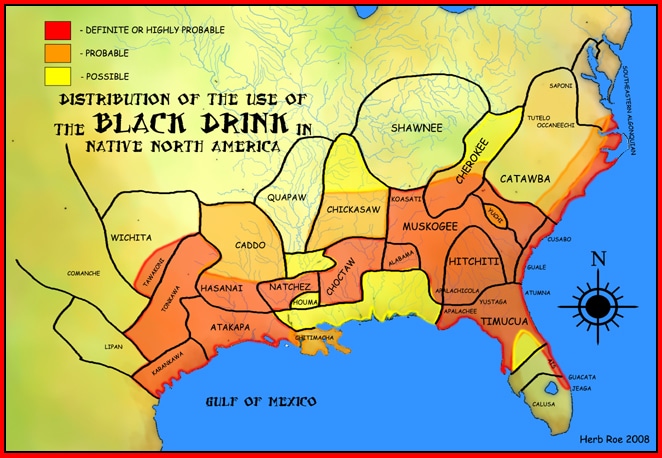
Photo: Herb Roe via Wikimedia Commons (CC BY-SA 3.0)
Could it have been an innocent mistake on Aiton’s part? It’s possible, but there were many accounts of colonists and British travelers drinking cassina without any ill effects. And, what’s more, botanist Carl Linnaeus, who founded the taxonomy we still use today, used the scientific name Ilex cassina when referring to yaupon. Still, in several editions of Aiton’s book, the “vomit” label persists and, eventually, the British Empire threw its weight around to stamp out competition for tea, sugar, tobacco, and opium.
And so, this is why you likely have not tried North America’s native tea. Luckily, today there are producers who are looking to change the fate of yaupon tea and revive this important tradition. At the forefront of the movement is Yazoo Yaupon, which was started when a native Mississippian, Oliver Luckett, returned home and discovered that the decorative holly in his father’s backyard was actually tea. Luckett then joined forces with the Yaupon Brothers American Tea Co. to honor the heritage of the Mississippi Delta and make more people aware of what they already know—yaupon is simply a better tea.
Related Articles:
Early 20th Century Portraits Preserve the Heritage of Native Americans
What Is Indigenous Peoples’ Day? How This Holiday Honors Native People
3D Technology Reveals North America’s Largest Repository of Ancient Cave Art
Indigenous People in Alaska Invented Snow Goggles Centuries Ago To Protect Eyes and Improve Vision














































































